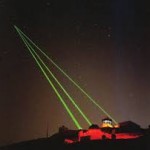-
August 1, 2017 at 9:35 am #44618
In reply to: Loop Control
The loop control will send the signal through a loop multiple times, our dispersion compensation samples make use of it. Instead of duplicating a transmission segment you can just reuse it with the loop control emulating a much longer transmission length.
In many components there are parameters which are wavelength dependent and can be approximated as a linear function near a certain reference wavelength. The parameters are then set with respect to this reference wavelength.
July 29, 2017 at 4:53 am #44598Topic: Loop Control
in forum FIBER
Abu BakarParticipantHi Everyone, Please anyone can tell me the function of loop control? Why we can use this component and also tell about reference wavelength?
July 25, 2017 at 2:35 pm #44542In reply to: Optical Solitons

Hi Abu,
Please have a look at the search results on our forums for this topic:
https://optiwave.com/forums/search/loop+control/If you don’t find the answer you are looking for in the search, please post a new topic.
July 25, 2017 at 11:33 am #44540In reply to: Optical Solitons

Hi Eric, Can you please tell me about the loop control why we can use and where we can use and when we neend this compoment??
July 12, 2017 at 10:00 am #44403In reply to: Simple MATLAB component
I think that means that somewhere you have a control segment like loop that is missing the END command. Maybe when you copied it over to a new file you forgot the END?
June 9, 2017 at 9:35 am #43914In reply to: loop control

dear S.Lymit
loop control replaces repetition of fiber spans and EDFA.For example if you are working on 10000km long fiber link containing EDFA after 1000km then it is better to use loop control.You set loop control=10 giving 10*1000 where the signal pass 10 times from 1000km fiber and one EDFAApril 19, 2017 at 3:48 am #43064Topic: NEED HELP FOR SYSTEM PARAMETER SETUP
in forum EXCHANGE
Fabrice MFUAMBAParticipantNeed help to setup my system parameter, i’m working on microwave frequency dependence using different modulation and cascaded dual drive modulator with loop control circuit to get the flat response output in time domain and frequency domain. So, i could not go far with my system due to some BER output results with too much noise and no histogram as well. Please need help from anyone here. my email is fabriceshao@yahoo.fr. Please find the osd file attached.
July 26, 2016 at 7:31 am #41054Topic: Optisystem crash
in forum SYSTEM
Mohammad Istiaque RejaParticipantHello,
I am new to Optisystem software and some help would be essential.
I am trying to simulate OFDM modulation in optical fiber “Optisystem 14 trial version”.But the problem is, If i make any slight change in the given example of OFDM modulation (like removing the loop control of the optical fiber, or any slight changes), it opens a dialogue box showing “OPTICAL COMMUNICATION SYSTEM HAS STOPPED WORKING” and ultimately it closes the whole software.June 27, 2016 at 4:27 am #40832In reply to: Optical Phase Locked Loop

Dear Aabid Baba,
Thanks for your input. I have understood the implementation of phase locked loop for electrical systems. The point is here is PLL with optical system using optiwave. For this two things are required
1. Feedback environment in optiwave tool : This is now pretty clear for me, thanks to electrical pll link shared by you all.
2. Tunable laser simulation in optiwave: Optiwave library doesn’t have this component. Thus, this problem is still open. I am looking for – whether I can simulate tunable laser wherein electrical voltage will control the optical wavelength of laser source. Requesting help in this.Dear Karan,
I understand advantages and implementation of tunable laser source. But problem here is simulation in optiwave. Optiwave doesn’t have the tunable laser component in library. I am looking at alternate ways to simulate this.June 10, 2016 at 2:25 am #39846In reply to: Help for simulation

Hello Mahmoud Ghorbel,
As Hamza ali has already given you an idea how to deal with loop control parameter. Still for your convenience i will try to repeat it that you need to first drag the Loop Control to the Main layout, Connect the output port of the WDM Mux 8×1 to the first Loop Control input port, Connect the first Loop Control output port to the Optical Fiber input port, Connect the output port of the second EDFA Ideal (connected to the Optical Fiber) to the Loop Control input port.
You may refer to these links for further study. I hope this will help.Regards
Burhan

hi all
i agree with all the replies.i want to add that Most applications of CW lasers require that the power be as stable as possible over long time periods (hours or weeks), as well as over short time durations (microseconds), depending on the specific application. To ensure this stability also in the presence of varying environmental situations like temperature, vibration and the aging of the laser itself, microprocessor control loops are implemented. For example, a diode-pumped Nd laser will have servos to adjust temperature and output power of the pump diodes to maintain stable output power from the resonator. In addition, other servos may control the perfect alignment of the resonator mirrors.
RegardsMay 5, 2016 at 1:33 am #38851In reply to: Help for simulation

Hello,
As far as loops are concerned there are few links i am posting that might help u. Generally The Loop Control allows you to set the number of times the signal propagates in the components that are connected between the Loop Control input and output ports. Use the Loop Control to calculate the system performance based on the number of fibers.
To connect the Loop Control, perform the following procedure.
From the Component Library, select Default > Tools Library.
Drag the Loop Control to the Main layout.
Connect the output port of the WDM Mux 8×1 to the first Loop Control input port.
Connect the first Loop Control output port to the Optical Fiber input port.
Connect the output port of the second EDFA Ideal (connected to the Optical Fiber) to the Loop Control input port.Here is the complete link
Hope this helps you
ThanksApril 27, 2016 at 12:09 am #38547
Hi Rajguru M Mohan.
I would like to mention that A travelling-wave model of a semiconductor optical amplifier based non-linear loop mirror is developed to investigate the importance of travelling-wave effects and gain/phase dynamics in predicting device behaviour. A constant effective carrier recovery lifetime approximation is found to be reasonably accurate (±10%) within a wide range of control pulse energies. Based on this approximation, a heuristic model is developed for maximum computational efficiency. The models are applied to a particular configuration involving feedback. Travelling wave soa is an optical amplifier which causes polarization sensitive type amplification by the occurrence of a change in the carrier density of its material when a weak optical signal is injected into it. The carrier density occurs by releasing some of the energies of its electrons in the form of photons to adjust with the initial wavelength of the weak optical signal. I hope this will be of some help to you.
ThanksApril 8, 2016 at 1:00 am #36071In reply to: DCF compensation

Hi Ranjeet Sir..
Thanks for sharing this important info on the concept of the relation between SMF and DCF.. I feel it should be very helpful to everyone working with DCF.
As Dhiman Sir mentioned about using loop control for DCF i also think that it is a good option as i have myself used loop control option. The performance is good.. As Khadija mam said that if we take DCF not equal to 5 times SMf distortion appears i think loop control may help her to overcome that distortion.. I hope it will be helpful for all. Thanking youWith Regards
Jyoti SharmaApril 7, 2016 at 2:32 pm #36048In reply to: DCF compensation

Hi Khadija Omran,
I would suggest you not to use so long fiber in either cases but try to use loop control and pur SMF of 20-30 km and respective DCF this should give you best results. Further you can use optical amplifier for attenuation compensation.Regards,
Dhiman
Categories
- All
-
Knowledge
Contains a detailed Q&A knowledge base. -
General
All non-technical questions. -
System
Optical system design and analysis. -
Instrument
Communicate and control different kinds of instruments. -
SPICE
Opto-electronic circuit design. -
FDTD
Finite-Difference Time-Domain simulation. -
BPM
Beam Propagation Method analysis and design. -
Grating
Fiber optic grating simulation. -
Fiber
Optical fiber design and characterization. -
Exchange
Users can exchange design files.
(Matlab, C++, etc.)

